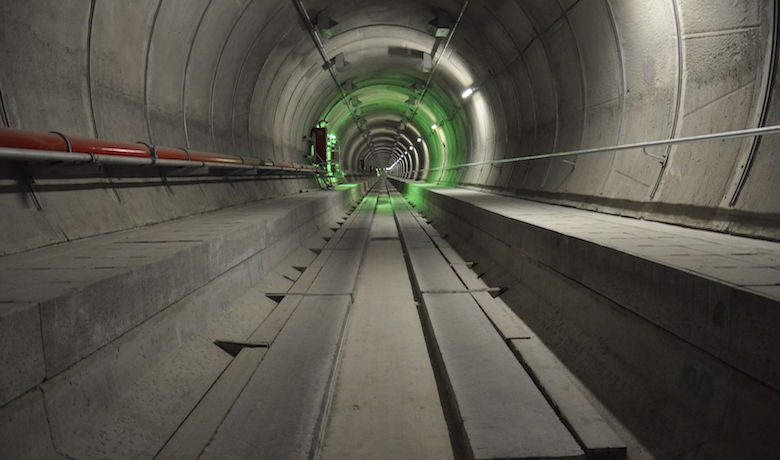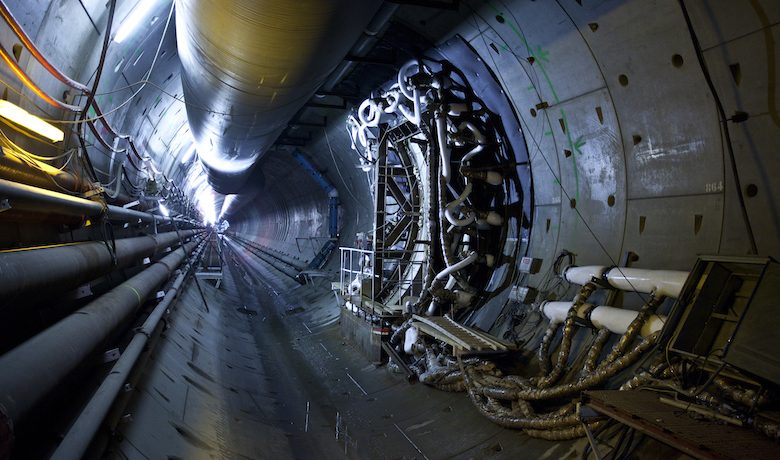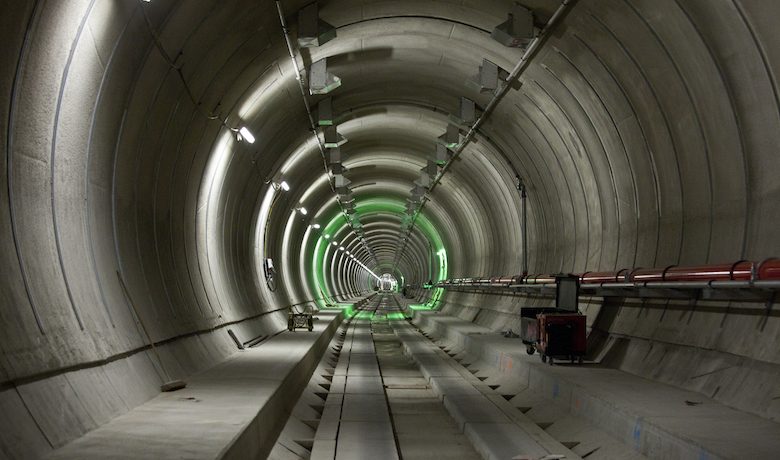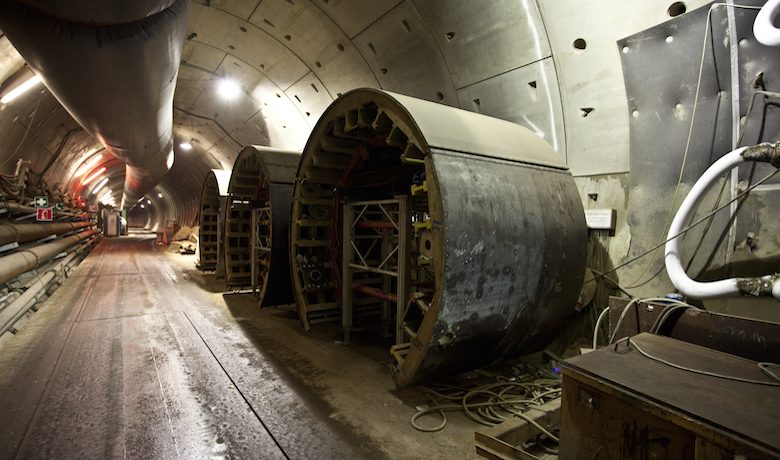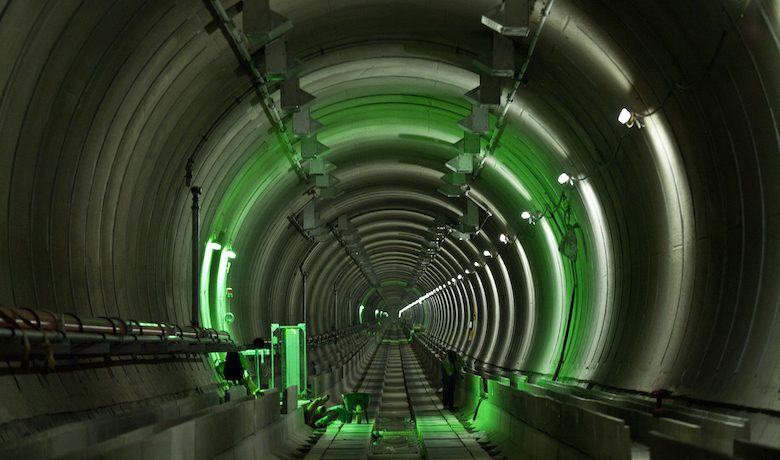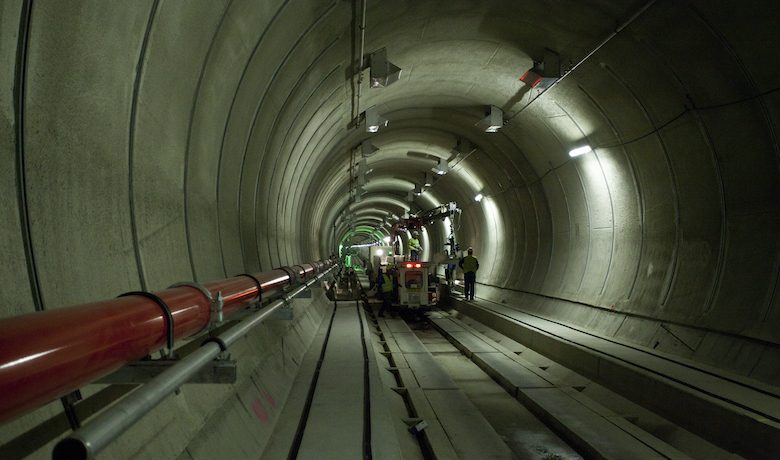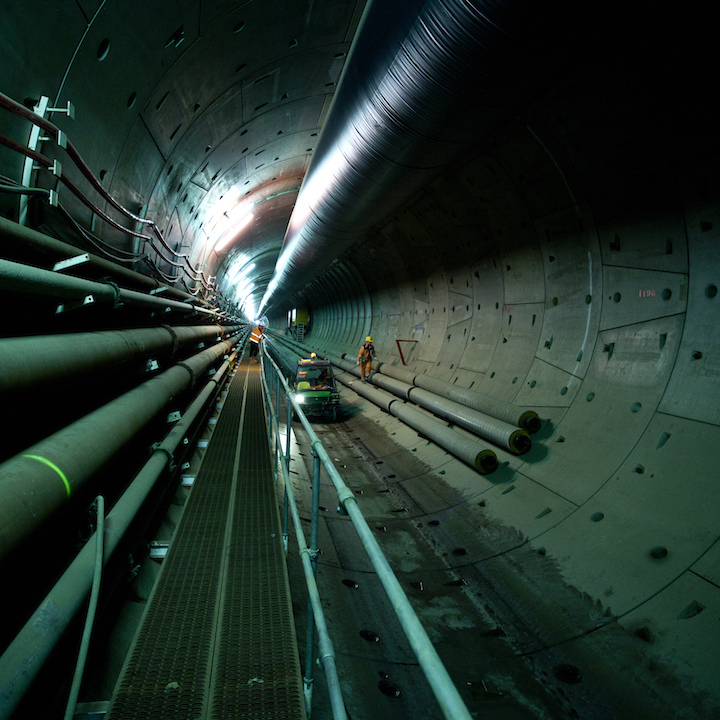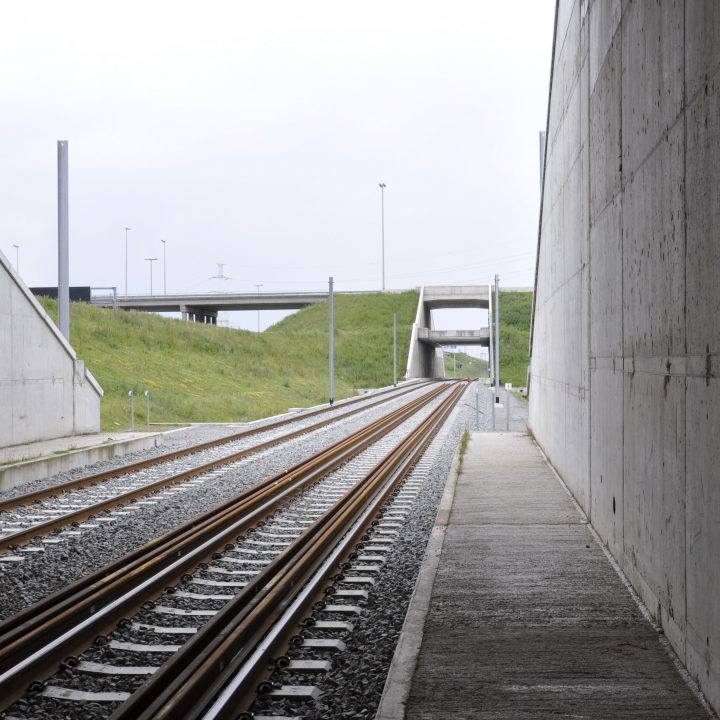TECHNICAL OVERVIEW
Two pressure-balance TBMs, baptised Schanulleke and Wiske, were built to dig the two tunnels, each 6 kilometres long, in sandy and clay soil. The tunnel tubes are 40 metres below the surface of the Escaut river (also known as the Schelde River), that is, about 10 metres below the riverbed, and about 30 metres below Kanaaldock. To carry out this operation, the riverbed and canal bed were prepared and reinforced with a concrete structure. Boring operations were conducted using two high-pressurised water Mixshield TBMs with a diameter in excess of eight metres.
Under the Escaut river, hydrostratic pressure, which fluctuated with the level of the ride (up to four bars at high tide), was our main challenge. The TBMs had to be equipped with a real-time pressure gauge in order to modify drilling parameters on a continuous basis given the shallow ground cover above the TBM (10 m). Under Kanaaldock, the soil is of a similar nature. In an effort to stabilise the zone in which both sets of tunnel-boring operations were carried out, 25,000 m3 of slow-curing mortar was poured in four days (from May 21 to 24, 2010) under the water at the port of Antwerp. The tunnels include access roads and shafts to be used by emergency and rescue services, along with thirteen intertubes, eight evacuation and ventilation shafts consisting of 21-metre-long, 6-metre-wide diaphragm walls installed 28 to 45 metres deep. In preparation for subsequent work (following the tunnel-boring operations), sealing and waterproofing were ensured using bentonite cement grout (3 shafts) or freezing (5 shafts). Construction of the two tunnels required production of 53,000 segments, which were built in Germany. A rail extension leading to the worksite was also built to supply up to 1,200 prefabricated segments directly from the manufacturing plant.


